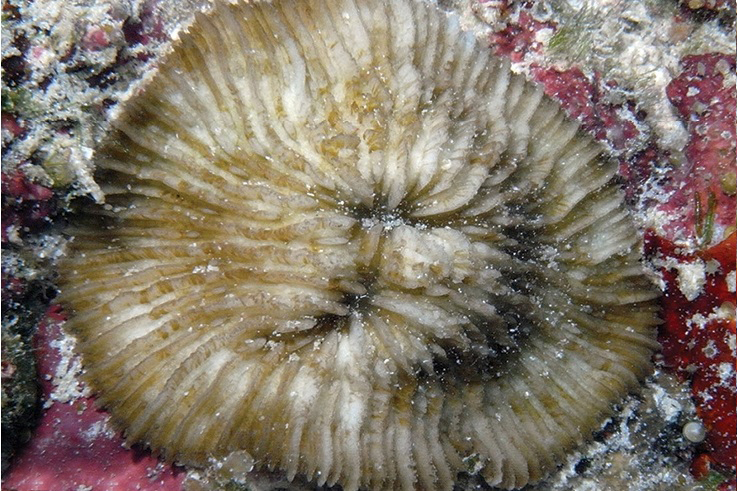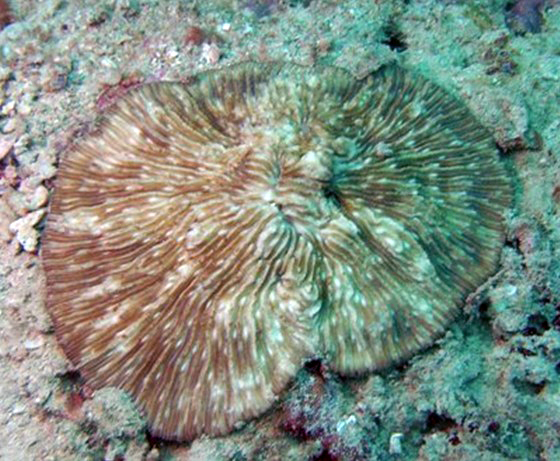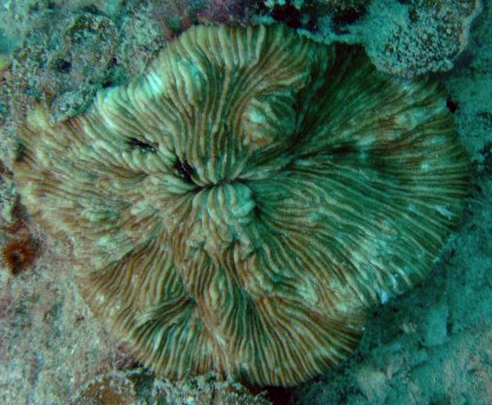About
This endangered coral species has a range which is restricted to one small area off the coast of north-eastern Borneo where it is easily misidentified as a closely related species, Lithophyllon undulatum.
There is a severe lack of species-specific information for this elusive mushroom coral due to its small range and it being relatively new to science as it was only discovered in 2003.
Coral reefs within South East Asia and the Coral Triangle are subject to intensive and destructive fishing activities such as fish bombing. The resulting damage on reefs, and on corals specifically can be devastating. This, combined with the ever increasing threat of climate change and coral bleaching due to warming oceans puts many coral species in this area of the world at great threat.
- Order: Scleractinia
- Family: Fungiidae
- Population: Unknown
- Trend: decreasing
- Colony Size: Unknown
- Depth Range (m): 10-20
EDGE Score
Distribution
L.ranjithi‘s range is extremely restricted as it is only found off the coast of northeastern Borneo, situated within the Coral Triangle.
Habitat and Ecology
When encountered this species is typically below 10m and on hard or rocky substrate.



